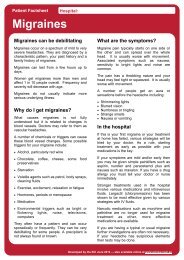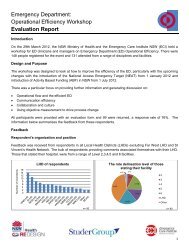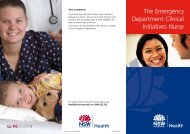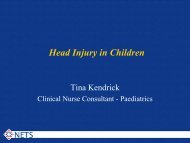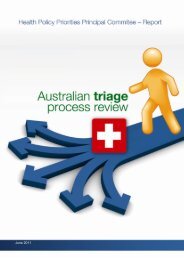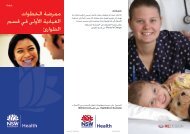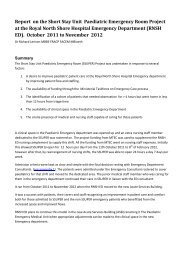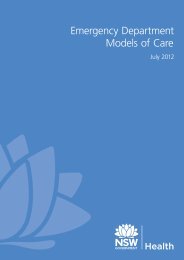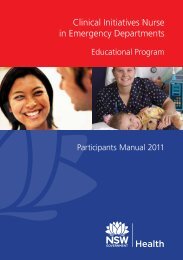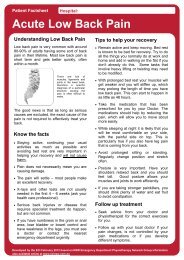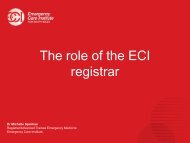Facilitators Manual - Emergency Care Institute
Facilitators Manual - Emergency Care Institute
Facilitators Manual - Emergency Care Institute
Create successful ePaper yourself
Turn your PDF publications into a flip-book with our unique Google optimized e-Paper software.
4.2 PATIENT ASSESSMENTAim<strong>Emergency</strong> nurses provide care for patients of all ages with diverse clinical presentations. To ensuregood patient outcomes, it is imperative to have a systematic approach to assessing the emergencypatient. The learning outcomes for this module have been designed to enable participants to gaina greater understanding of the fundamental patient assessment principles.Learning OutcomesBy completing this section, the participant will be able to:• Perform a primary and secondary survey, using a systematic approach.• Identify life threatening injuries or conditions during a primary survey and initiate appropriateinterventions.• Perform a relevant and appropriate subjective assessment.• Recognise clinical indicators of urgency called ‘red flags’ in the patient history.• Demonstrate review and re-assessment of clinical findings and management interventions &escalate appropriately.• Document assessment findings in the patient’s progress notes.• Discuss barriers to assessment that may be encountered in <strong>Emergency</strong> Department.Content• Look, Listen and Feel.• Inspection, palpation, auscultation, percussion.• Primary Survey- Airway Assessment- Breathing assessment- Circulation assessment- Disability assessment.31• Secondary Survey- Exposure & Environment- Family and Formal Set of Vitals- Gadgets/gather Pathology- History and Head to Toe- MIST mnemonic for trauma patients- Ample mnemonic.Suggested Modalities• Simulation.• Role play.• Tutorial.• DVD – e.g. ‘Physical assessment for nurses: A practical approach’ (College of Nursing).• Experiential Learning.Facilitator ActivitiesThe following activities have been designed to further develop participant knowledge of patientassessment and nursing interventions. The facilitator may use any, or all of the outlined activitiesto achieve the modules aim. Alternatively facilities may choose to use other outlined modalities.Option 1: Role PlayThe aim of this activity is to provide participants with an opportunity to conduct a comprehensivepatient assessment and receive performance feedback in a controlled simulation environment.




